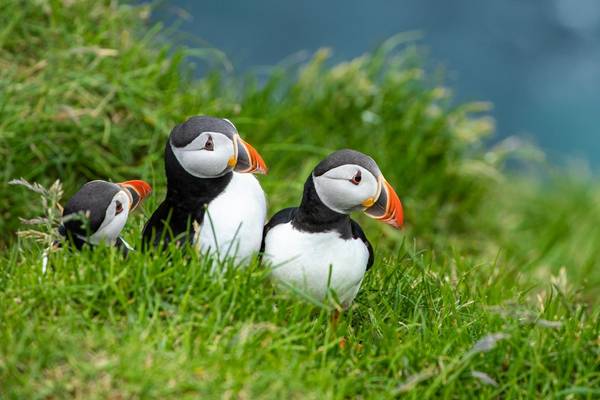Irish Saxifrage
The Burren: Ireland’s Wildflower Wonderland

Operations Consultant
21st June 2025
Tucked away in the north-western corner of County Clare, Ireland, the unique landscape of the Burren appears almost otherworldly, dominated by vast expanses of bare, fissured limestone pavement. The name derives from the Irish word ‘Boireann’, meaning ‘rocky district’ and, despite its seemingly barren appearance, the Burren hosts an extraordinary array of plant-life. It is one of the few places in the world where Arctic, Alpine, and Mediterranean species grow side by side – making it, arguably, the most exciting wildflower destination in the British Isles. In May, I was fortunate enough to join Naturetrek’s tour to the Burren, led by expert botanist Bruce Middleton.
Our charming base for the week was Sheedy’s Hotel in Lisdoonvarna and, ready to greet us with a warm welcome, was hotel owner and manager, Martina Sheedy. The Country House has been in the Sheedy family since the early 1700s – a much-loved home that has been passed down the line of generations. All 11 rooms of the hotel were reserved for our Naturetrek group, allowing us exclusive use and time and space to enjoy chatting through the daily sightings each evening before dinner. During the week, we were treated to exceptional hospitality and delicious three-course evening meals (the wonderful breakfast spread also deserves a mention!).
With more than 700 different species of flowering plants, ferns and conifers recorded in the Burren, we had plenty to keep us going. However, we did not have to wait long to find one of the most renowned Burren specialities – the Spring Gentian. It is an Alpine plant which thrives on the highest slopes of the Alps and the Pyrenees and yet, here, grows at sea level! Our first afternoon of the tour got off to an exciting start! The Burren is also celebrated for its orchids, and during our five days, highlights included Irish Marsh, Early Purple, Fragrant and Twayblade.
The fissures in the limestone pavement, called ‘grikes’ or ‘scailps’, can be up to two metres deep. Here, ferns and flowers grow just out of immediate sight – making the grey landscape deceptively rich in biodiversity. It is a particularly good place to observe the Burnet Rose and Maidenhair Fern. Time spent exploring these secretive scailps afforded us many new species to enjoy.

Spring Gentian

Early Purple Orchids

Puffins
Along with the wonderful flora, there are plenty of bird species to be admired. The calls of Cuckoos became a regular fixture whilst searching the limestone pavement for botanical treasures, and we were even rewarded with a sighting when one was spotted perched on a dry-stone wall. Our visit to the Cliffs of Moher on the final day of the tour was excellent for seabirds, with Puffins and Kittiwakes being the highlights.
This year, Ireland has been experiencing an unusually warm and dry spring, and as a result butterflies were in abundance with Wood White, Pearl-bordered Fritillary and Dingy Skipper frequently seen on our daily excursions.
The Burren is not only a natural wonder but also a cultural one. The landscape is scattered with prehistoric tombs, early Christian churches and mediaeval ring forts which stand as reminders of those who lived here millennia ago. It really does feel like a place where geology, ecology, and human history are interwoven in a timeless tapestry.
Our holiday passed all too quickly, but after experiencing so much of what the Burren has to offer, we returned home with many fond memories of Ireland’s wildflower wonderland. Do join us next May!





 Loading search...
Loading search...